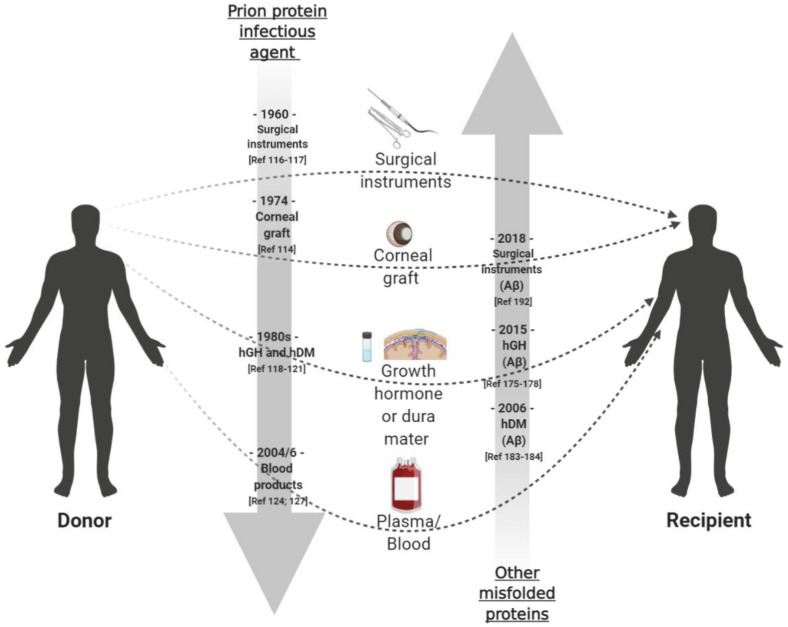Figure 2.
Schematic timeline (grey arrows) of the first reporting (as referenced) of acquired forms of Creutzfeldt-Jakob disease (CJD) and the possible human-to-human transmission of amyloid-beta (Aβ) pathology. The routes of exposure to prion protein aggregates, resulting in iatrogenic CJD (iCJD), are well-documented and include medical interventions such as cadaveric human growth hormone (hGH), cadaveric dura mater grafting (hGH), and through a small number of neurosurgical procedures. The recent re-examination of brain tissue from iCJD cases have suggested that Aβ neuropathology may also spread through similar routes of exposure. Concerns that the Aβ neuropathology may be a consequence of cross-seeding with co-existing prion protein aggregates were discounted following the observation of Aβ neuropathology in a proportion of hGH recipients who died from causes unrelated to CJD. While secondary transmission of variant CJD (vCJD) via transfusion medicine has been reported, no such instances of transmission have been identified for other pathogenic proteins. However, as the timeline for the identification of possible iatrogenic transmission of Aβ neuropathology occurs decades after that of acquired forms of CJD, the possibility of the transmission Aβ neuropathology via transfusion medicine requires further investigation, particularly due to the high presence of Aβ that accumulates in cerebral blood vessels in the iCJD patients.

